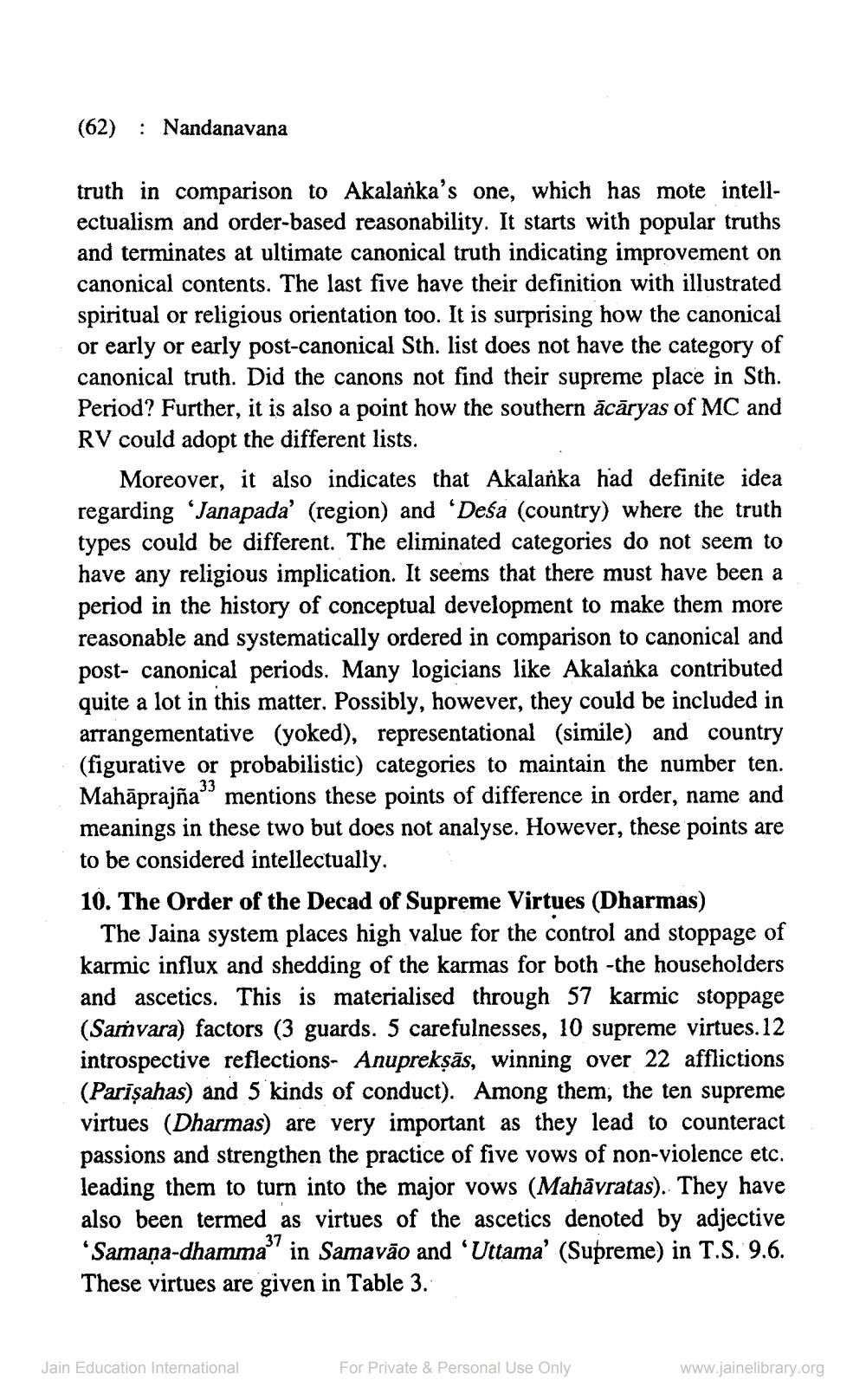________________
(62) : Nandanavana
truth in comparison to Akalanka's one, which has mote intellectualism and order-based reasonability. It starts with popular truths and terminates at ultimate canonical truth indicating improvement on canonical contents. The last five have their definition with illustrated spiritual or religious orientation too. It is surprising how the canonical or early or early post-canonical Sth. list does not have the category of canonical truth. Did the canons not find their supreme place in Sth. Period? Further, it is also a point how the southern ācāryas of MC and RV could adopt the different lists.
Moreover, it also indicates that Akalanka had definite idea regarding Janapada' (region) and 'Deśa (country) where the truth types could be different. The eliminated categories do not seem to have any religious implication. It seems that there must have been a period in the history of conceptual development to make them more reasonable and systematically ordered in comparison to canonical and post- canonical periods. Many logicians like Akalanka contributed quite a lot in this matter. Possibly, however, they could be included in arrangementative (yoked), representational (simile) and country (figurative or probabilistic) categories to maintain the number ten. Mahāprajña" mentions these points of difference in order, name and meanings in these two but does not analyse. However, these points are to be considered intellectually, 10. The Order of the Decad of Supreme Virtues (Dharmas)
The Jaina system places high value for the control and stoppage of karmic influx and shedding of the karmas for both-the householders and ascetics. This is materialised through 57 karmic stoppage (Sarvara) factors (3 guards. 5 carefulnesses, 10 supreme virtues. 12 introspective reflections. Anuprekşās, winning over 22 afflictions (Parişahas) and 5 kinds of conduct). Among them, the ten supreme virtues (Dharmas) are very important as they lead to counteract passions and strengthen the practice of five vows of non-violence etc. leading them to turn into the major vows (Mahāvratas). They have also been termed as virtues of the ascetics denoted by adjective 'Samaņa-dhamma in Samavão and 'Uttama' (Supreme) in T.S. 9.6. These virtues are given in Table 3.
Jain Education International
For Private & Personal Use Only
www.jainelibrary.org




